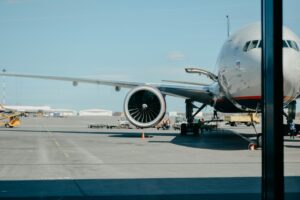 |
 By Andrew Coiley, South Asia Project Coordinator, Carbon Market Watch By Andrew Coiley, South Asia Project Coordinator, Carbon Market Watch |
New figures released by the European Union for its Emissions Trading Scheme (ETS), the world largest emissions trading platform show that quality standards are needed for airlines to stop investments in cheap offset credits that clearly lack environmental integrity.
In recent years international aviation has been under increasing pressure to reduce its sectorial emissions. Options on the table to achieve this include 100% offsetting and fuel efficiency. However following slow progress through the International Civil Aviation Organisation (ICAO) negotiations to agree on binding reduction targets, the European Union decided that starting from 2012 all flights arriving to and flying from the EU would have to account for their emissions and be included in its cap-and-trade scheme (EU-ETS). Airlines are allowed to reduce 15% of their emissions with international offsets.
In May 2013 the EU’s Union Registry published a comprehensive list of all offset credits surrendered under its scheme in 2012. From the 12.5 million offsets allowed to use for their compliance, airlines used almost 11 million offsets, 5.6 million and 5.3 million coming from the Clean Development Mechanism (CDM) and Joint Implementation (JI) respectively. The largest emitters amongst the aircraft operators in the EU, including Lufthansa, Ryanair and Easyjet, were responsible for 5.12 million offsets – almost half of all offsets used.
Carbon Market Watch had a closer look at the top 20 airline installations and analysed the type of offsets that airlines used to meet their climate targets. Fig.1 shows that within the EU ETS, the highest emitters covered under the scheme surrendered over 21 million carbon credits from HFC-23 and N2O (adipic acid) projects.
More than 7.000 CDM projects and 600 JI projects are currently approved under the UN’s flexible mechanisms. Yet, the offsets used by airlines originate from only a handful of high credit yielding projects. The implications of this in the ETS are that 28% of all CDM and JI offset credits used by the largest twenty operators came from offset projects that destroy the waste gas HFC-23. Moreover, this new data underlines the minor commitment demonstrated by airline companies to support renewable energy activities in CDM host countries.
Offset credits from HFC-23 and N2O (adipic acid) have been banned for use in the EU ETS altogether in 2011 with effect since May this year due to loopholes in their over-production and carbon leakage. Airlines were very well aware of the low environmental quality of these credits when they joined the EU ETS in 2012. For more, read our aviation briefing paper.
Bumpy Take-off!
If we cannot expect airlines, with some of the most visible corporate reputations, to curb their support for low-cost, high polluting projects, then how do governments propose steering other energy intensive industries into doing anything different?
Closer inspection of the types of carbon credits that were surrendered by airlines in 2012 leaves little doubt that without tougher environmental regulation on the quality standards for offset credits, scepticism will always remain associated with the quantifiable benefits of market mechanisms. If international governments truly seek to combat the realities of climate change then they must refrain from backing industries that continue along a course of environmental exploitation.
Key facts of offsets used in the EU ETS by the 10 largest airlines in 2012:
- The biggest emitters amongst airline operators in 2012 were Ryanair and Lufthansa;
- Airlines used 11 million offset credits;
- More than 1 million CERs come from 9 HFC-23 destruction projects, credits meanwhile been banned from the EU ETS over their lack of environmental integrity;
- Easyjet, Lufthansa and Air France bought 420.000 CERs from three N2O adipic acid projects in China and South Korea, equally banned for similar reasons;
- Lufthansa bought the largest chunk of credits (650.000 ERUs) from a JI track1 project that claims to have reduced Associated Petroleum Gas between2007 and 2011 at the Priobskoe oil field, one of the largest oil fields in the world;
- HFC-23 projects were the largest originators of CERs: 400.000 and 380.000 CERs originating from Chinese HFC-23 projects were sold to Easyjet and British Airways respectively;
- In total, Ryanair purchased 1.1 million CERs from seven N2O reduction plants, four HFC-23 plants and three wind parks;
- Lufthansa purchased 740.000 credits from three track 1 JI projects in Russia and Ukraine and from one N2O adipic acid project in China.
Read more from Watch This! NGO Voices on Carbon Markets # 6







